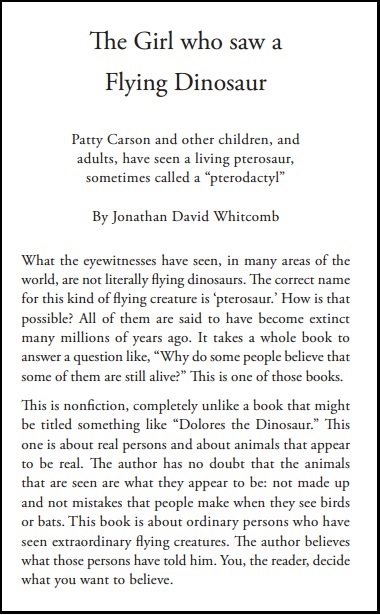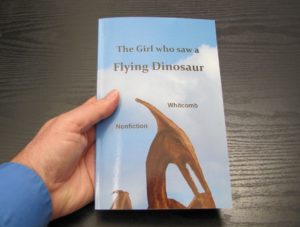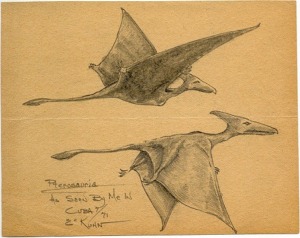Recent Sightings of Apparent Living Pterodactyls
By the cryptozoologist Jonathan Whitcomb
.
Sighting #1 in Connecticut
I received the following email in late July of 2019:
. . . I live in Gales Ferry, CT. It’s in between Foxwoods Resort Casino and Mohegan Sun Casino. In August 2013 at around 5:30 pm, I was working on the the front of my house
and I was on a ladder ready to step down. I got off the ladder and looked up towards the north and saw this Pterosaur flying from East to West. The two things that I noticed right away was the head. It looked exactly like the pictures that you would see as depicted. The second thing I noticed was the wings. There were no feathers, just a light brown “cape” like wing. It was above a smaller bird. I ran inside to get a camera, but it was gone. It was flying towards the Thames River. Some people didn’t believe me when I told them. I know what I saw.
By the way, this eyewitness referred to the Thames River in Connecticut, not the River Thames in England, although we do have sightings in England.
.
Sighting #2 in Minnesota
I believe I saw a Pterosaur last year on July 16, 2018. I had just gotten done shopping at Walmart for some supplies in northwestern Minnesota and was on my way back home. It was between 5 and 5:30 pm and as I got into my car I turned to drive north and I immediately looked up at this flying creature that looked and flew very odd . . .
I didn’t think to look for a tail or even notice one at the time but what I did notice was the way it flapped its wings. The wings seemed to roll or have a wave like form from the body outward to the wing tip. The wings would flap very slowly but the creature did not seem to have any trouble flying. The wings also were shimmering on the top of them reflecting the sunlight. I noticed no feathers at all on it but the rear of the wings were very smooth in a curved shape.
.
Sighting #3 in Ohio
This was around the beginning of June, 2019:
. . . what I saw the other day was remarkable. My mother in law and I were at her land bird watching… we seen a HUGE shadow creep across the ground, we looked up and what we saw will forever be engraved in my brain. We both saw what looked like a dinosaur bird-like
prehistoric animal. There were absolutely no feathers . . .It was the size of a small private jet. . . . it had enlarged bat like wings . . . I’m … curious of other sighting in or around Ohio. We live in a small town called Franklin . . .
.
Youtube video “Living Pterosaurs – in newspapers”
.
###
.
Living pterosaurs in newspapers
Two days ago I uploaded a video to Youtube: “Living Pterosaurs – in newspapers,” an introduction to some newspaper articles published over the years, one of them being back in the late 1800’s. Part of this mini-documentary explains part of why such news coverage is rare in the United States: Average readers assume that all “pterodactyls” became extinct long ago . . .
.
Several Americans have investigated reports of what natives of Umboi Island call “ropen,” including three pioneers. Jim Blume, a missionary in Papua New Guinea for decades, interviewed dozens of native eyewitnesses of pterosaur-like creatures. Carl Baugh led the first three expeditions, pre-paring the way for the rest of us to follow. Paul Nation, in four expeditions, searched in two areas of PNG, contracting serious infections twice.
.
Living pterosaurs in the United States
Not all human encounters with live pterosaurs are a pleasant surprise. On rare occasions, a ropen, or kor, or indava (or by whatever name) will attack somebody, and the results are sometimes tragic, at least for the human. Although reports of people being attacked by large flying creatures in the United States, in recent generations, are rare, attacks have been reported in other areas of the world and in earlier times.
.
I estimate that it was flying 250-300 feet above the ground level. If guessing, I would estimate the wing span to have been 15-20 feet.
.
A living pterosaur in South Carolina
Learn much more about the South Carolina sighting. Read the non-fiction cryptozoology book by Jonathan Whitcomb: Live Pterosaurs in America (third edition).
.


